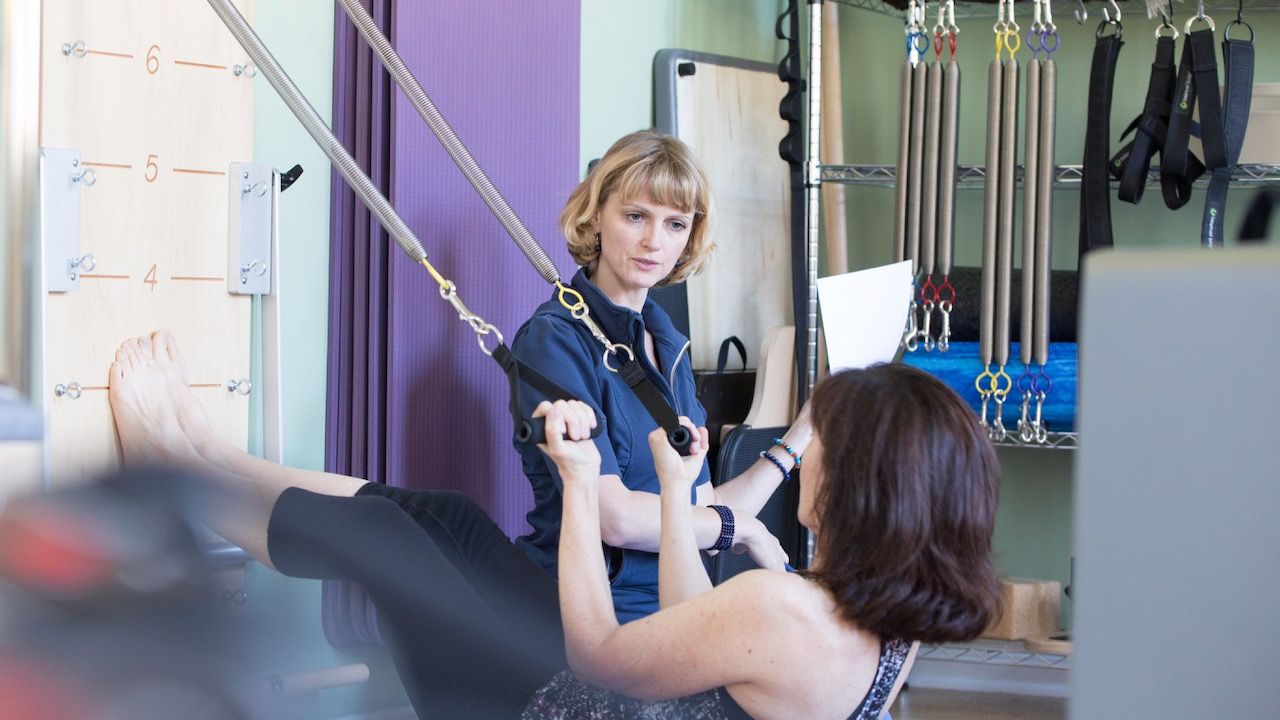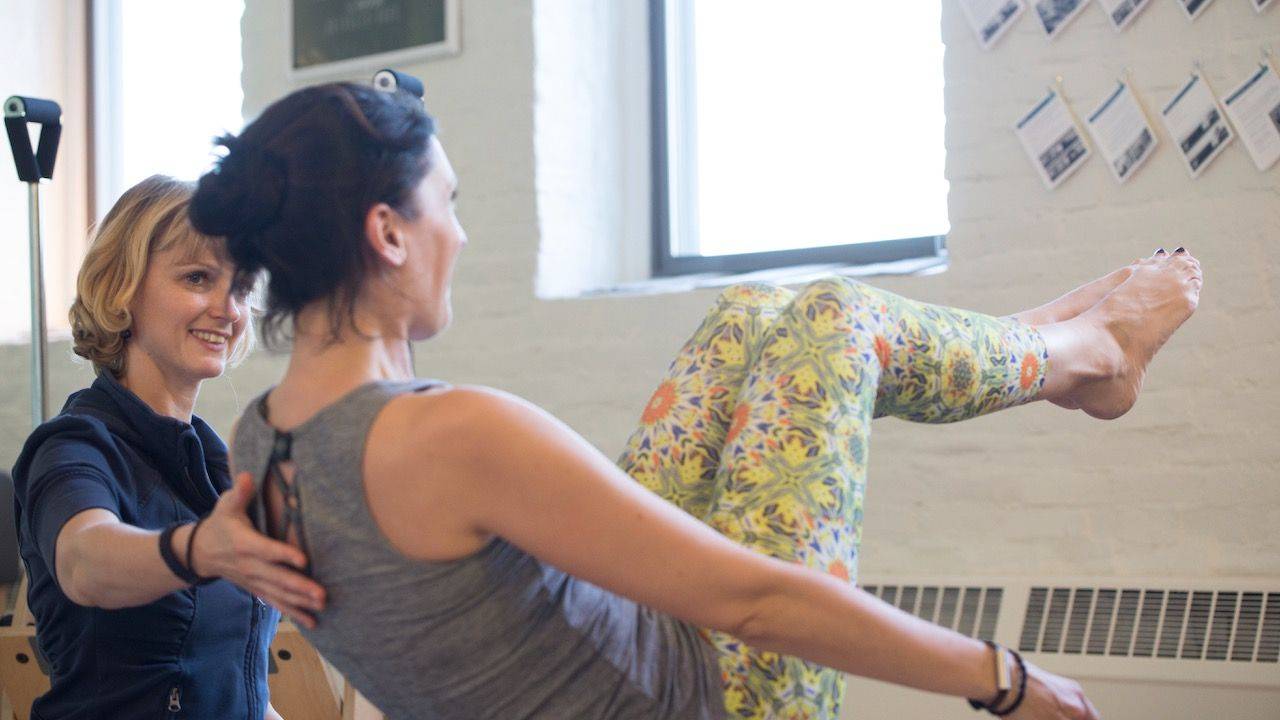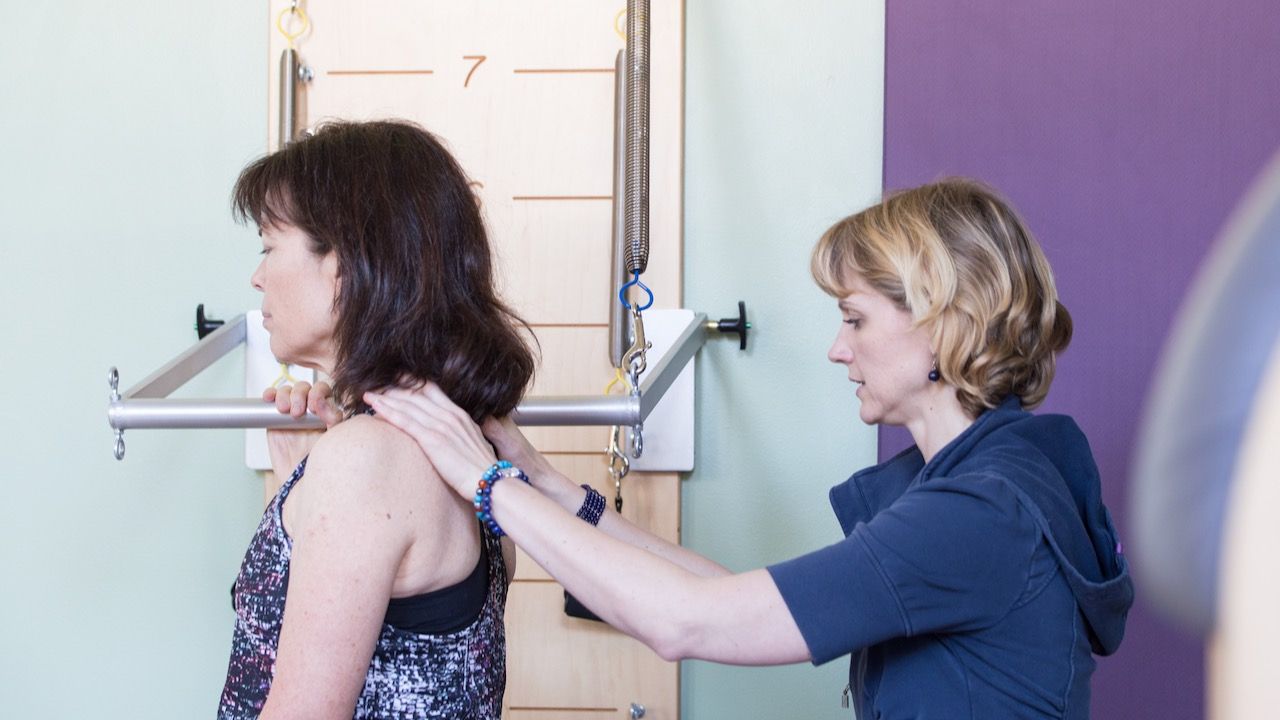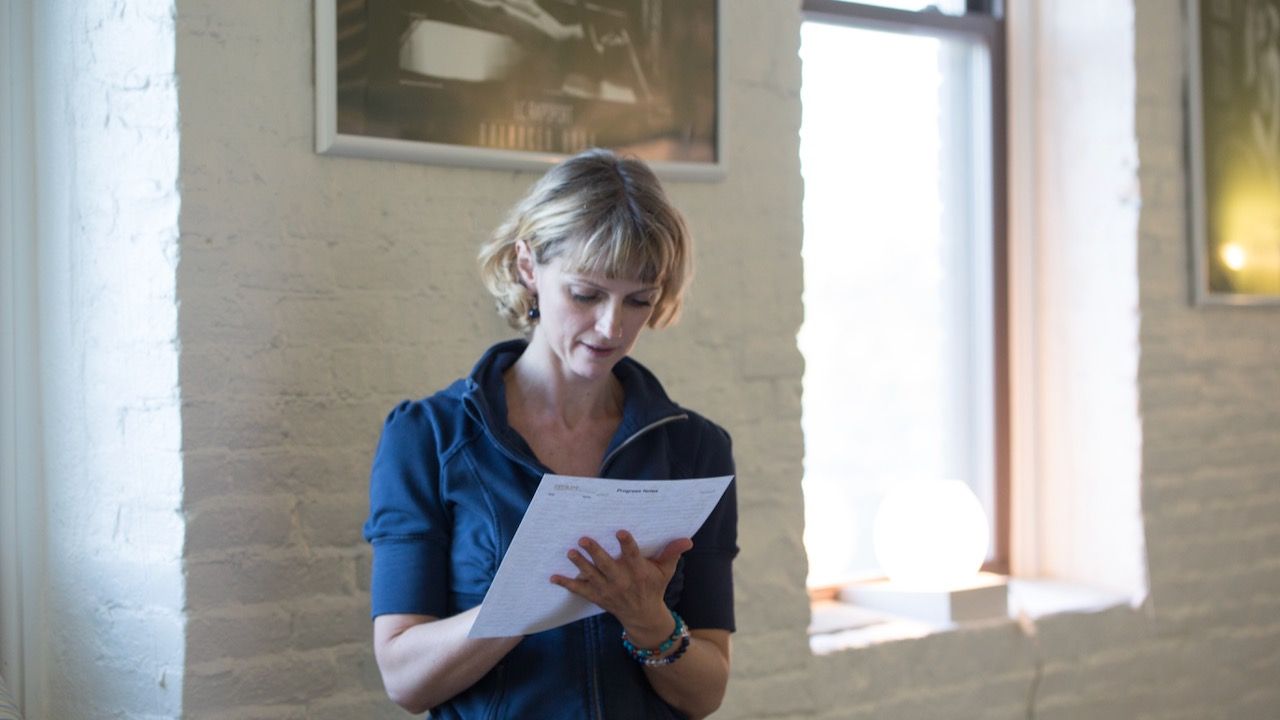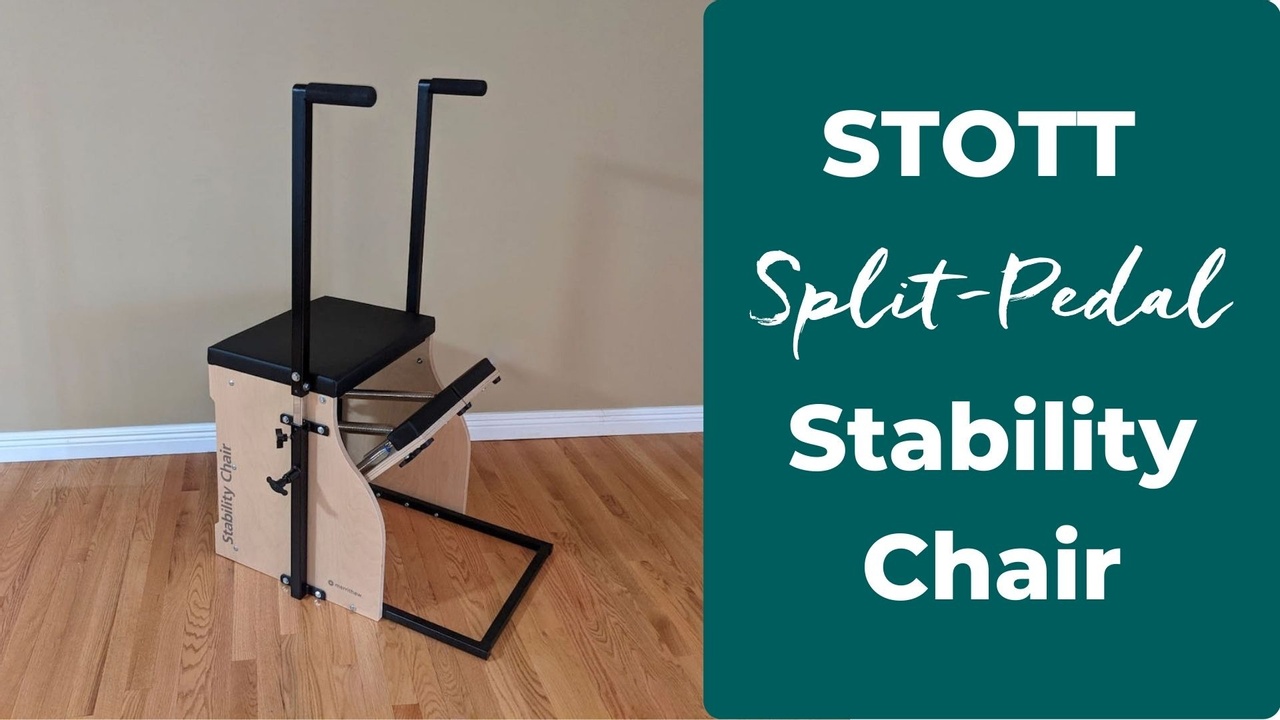
My review of the Merrithew STOTT PILATES Split-Pedal Stability Chair
Jul 07, 2021I’ve worked with a few different types of Pilates Chairs over the years. Recently, I got to purchase the Merrithew™ Split-Pedal Stability Chair™ for myself. Here’s my review!
What I like about the STOTT Merrithew Split-Pedal Stability Chair
The Option To Split The Pedals
You can use this Chair with the pedals connected or split in two. This is a huge plus to me. Having the split pedal option significantly increases the number of exercises and variations that can be performed on the Chair, such as introducing rotational movement, balancing asymmetries, challenging trunk stability against unilateral limb movements, and improving proprioception.
A Smooth Ride
When the pedals are split, they easily glide past each other.
The Balanced Body Combo Chair provides a similarly smooth experience when the pedals pass. When it is new, the Balanced Body EXO Chair does the same thing. However, in my experience, the pedals start to bump into each other over time, usually at lower heights.
Both the Merrithew Split-Pedal Stability Chair and the Balanced Body Combo Chair have two spring trees, one for each pedal. I think this helps with longevity.
There is also a very smooth and gradual progression in tension as you push through the springs. Since the Balanced Body Combo Chair pedal will sit at different heights depending on the tension you’ve attached, it can’t always provide that same smoothness. When springs are attached at various heights, which you might do to get the desired tension, you have to press the pedal down to a certain level to get engagement from all of the springs. That transition can be abrupt.
Superb Padding
I love the high-density foam that Merrithew uses on their equipment. I feel like my bones are well cushioned and I don’t sink to the hard surface below that padding.
Merrithew went even further and added this high-density foam to the pedals as well. Pedals from other brands are usually firmer and lack cushioning. This extra padding can be great for sensitive feet. In comparison to other models, the pedal surface may be a touch slippery for an exercise like Washer Woman III or Side Pull Up. However, it’s not anything that a pair of grip socks or a gripper mat can’t fix.
Another unique aspect of the padded surface of these pedals is their shape. Most other chairs provide more of a rounded surface. These are flatter with squared edges and corners. This flat surface may provide a sense of security and stability for exercises where feet are on the pedals.
The only other model I’ve found that has padding on the pedals is Metalife Infinity Traditional Line Step Chair. I can’t speak to the quality of this though, since I’ve never used it.

Handles Make All The Difference
After teaching at a studio that only had Chairs sans handles, I really came to appreciate what they can do for you. Whether it’s light balance support or full-on supporting your body weight on your hands - as in Dips - I really appreciate this feature. Unique to this Chair, there are 7 possible height settings for the handles. Most other Chairs have 3 to 4. They are also completely removable, for the times you’re looking to challenge your balance or want more freedom in movement.
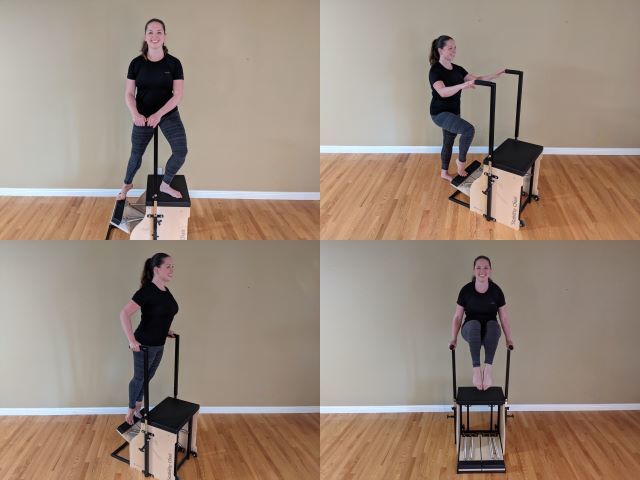
Are these pros or cons? I'll let you decide.
Splitting and Connecting the Pedals
On the underside of the pedals, there are two star knobs and a metal bar.
To separate the pedals, turn the star knobs to the left to loosen them. Sweep the metal bar around until it hangs vertically. Retighten the knobs to secure the pedals in the split position.

To lock the pedals together, loosen the star knobs. Sweep the metal bar around until it is securely hooked around both star knobs. Retighten the knobs.
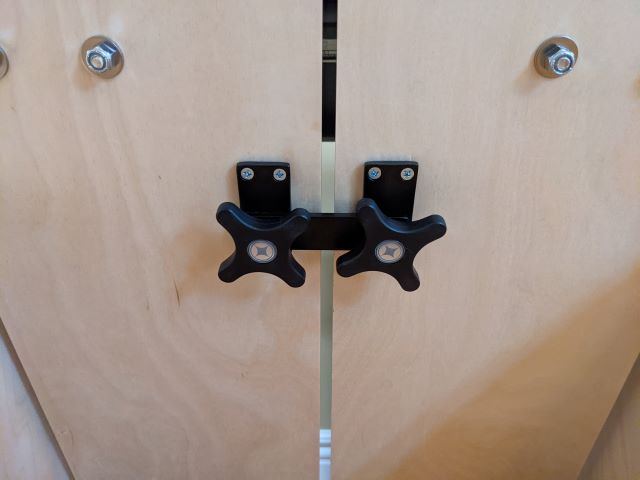
As you can see, there are a few steps to this process and it takes up a little bit of time. Many Chairs have a much simpler and quicker locking mechanism. But, some of those other Chairs’ pedals do not lock together as securely as this one.
When the Split-Pedal Stability Chair pedals are locked together, you wouldn’t sense or know that they had once been two separate pieces. They seamlessly move together, simultaneously. In my experience, the Balanced Body EXO Chair doesn’t provide that same stability. Even when the connecting dowel rod is in place, there is some give between the two pedals. I was teaching Footwork on the Chair in a group class, and all I could hear was clunk, clunk, clunk. The right and left pedals were bumping into the connecting dowel rod at different times, especially during the initial push from the pedals highest position. You could say that this helps to point out when someone isn’t working evenly between both legs. To me, that’s what splitting the pedals is for. I’d like to also be able to provide absolute stability for those who need it.
(Re)Moving The Handles
At the base of the handle, there is a spring-loaded stopper and, just above it, a star knob.
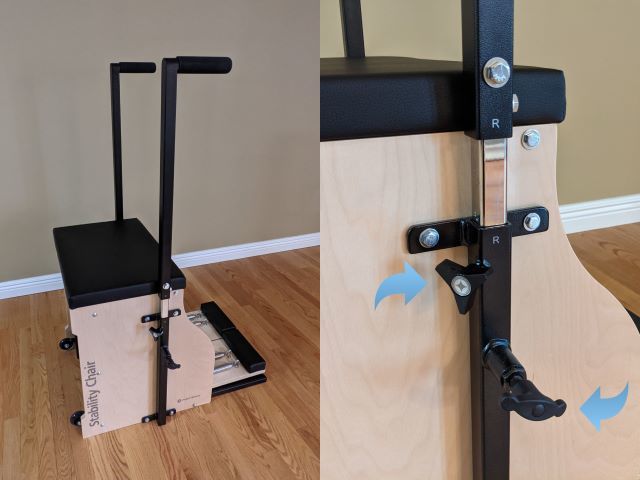
If you want to move the handles, the first step is to turn the star knob to the left to loosen it. Then you pull the spring-loaded stopper out while you adjust the height of the handle. To secure the handle at its new setting, release the spring-loaded stopper so that it locks in place. Then tighten the star knob.
To take the handles off, loosen that start knob and pull the stopper out while you lift the handle until it completely releases from the Chair. To put it back in, it’s the same process in reverse.
Caution! Make sure you’ve got the right handle for the right side of the Chair. They are not interchangeable. If this bolt is facing the wrong way and enough force is used, it can rip your Chair seat. A few “helpful” clients have quickly put the handles on the wrong side before I could get the words out to explain the difference.

Another common mistake is turning the spring-loaded stopper. Only the star knob is meant to be turned. The stopper, ideally, should only be pulled out or released to lock back in place.
Is this complicated enough to stop me from using the handles? Absolutely not. I got used to it quickly and it has worked well for me.
But, is it a seamless and easy experience for all people? No.
I will say that the handles lock very securely in place, just like the security provided by the locking mechanism on the pedals. This is something I definitely want when it comes to something I’m depending on for stability. I’d also much rather deal with this process than have no handles at all. However, there might be a more user-friendly way to set up handles on a Chair.
Mobility
The wheels on the back of the Chair allow you to move it through your space without dragging it along your floor. Hold the Chair at the handles and tip it backward, to get the weight of the Chair on the wheels, and then roll it to where you need it. You’ll need a bit of room in order to tip the chair back. That could be challenging if you’re in a tight space. While this is less cumbersome to maneuver than simply picking the Chair up, it’s still a significant task. This Chair weighs in at 83 lbs. To compare to models that have both split pedals and handles, this is a little lighter than the Balanced Body Combo Chair and a little heavier than the BASI Systems Wunda Chair. The Peak Pilates MVe Split Pedal Chair with Handles is the lightest available. While there aren’t wheels on this one, it’s light enough to simply pick up.
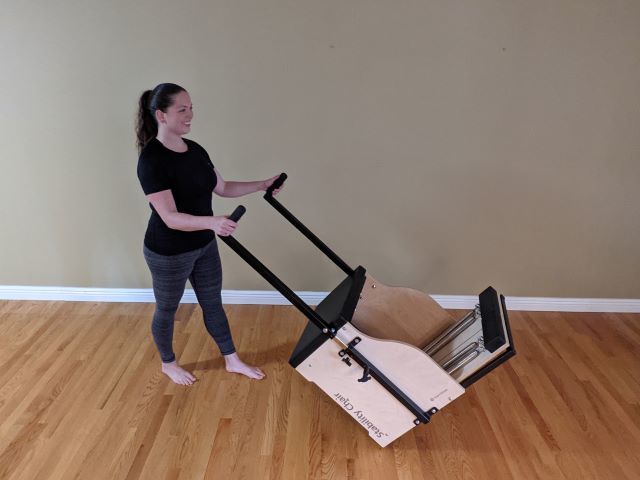
Two Spring Trees with 3 Height Options for Each Spring Attachment
This Chair is equipped with 2 heavy (red) and 2 light (blue) springs, and there are two spring trees at the back of the Chair. The springs can be attached at 3 different heights.

Most other chairs have 4 heights to attach springs. Does this mean you have fewer spring tension options? It depends.
If you’re looking at another Chair with two spring trees, this will provide slightly fewer setting options. But if you’re comparing it to models with one spring tree, like the Peak Pilates MVe Split Pedal Chair or the Balanced Body EXO Chair, this provides significantly more options in spring tension.
More or less variability in spring tension could be a positive or negative. It depends entirely on your perspective. More options means more customization for your clients. You can get the tension just right for that client, for that particular exercise. Fewer options could mean less time to learn and get acclimated to the Chair.
Related: How To Choose The Correct Spring Tension
(Coming Soon)
Here’s an interesting note about the BASI Systems Wunda Chair, since at first look it seems very similar to the Split-Pedal Stability Chair. It has two spring trees, so you would think there is just as much variety in spring tension available. However, you change tension by adjusting the spring at the pedal end, not the tree in the back. Both the heavy and the light springs have to be attached at the same height if you’re dealing with the same pedal half. This does cut down your options.
What I dislike about the STOTT Pilates Split-Pedal Stability Chair
The Complicated Assembly
Ouch. This was rough. When you purchase one brand new from the manufacturer, it arrives completely disassembled. I wasn’t put off by this originally, as I’ve put together many Ikea furniture pieces. Overall, the instructions were a bit confusing. For example, the labels on the parts did not coordinate with the names in the instructions. Even if the instructions had been more clear, the process is a bit lengthy. I wish I had found this video before I put mine together. Check it out to see what you’re getting yourself into.
All of the Balanced Body Chairs arrive fully assembled. I’m not sure if that affects your shipping price since it’ll take bigger packaging.
The Gap in Spring Tension
When working with lighter spring tensions, 2 light top is a setting used often. The next available heavier tension would be 1 heavy low 1 light top. There is a pretty significant jump in tension between those two settings. I do wish there was some type of stepping stone between them.
No Gripper Material Underneath The Chair To Stop It From Sliding Around
My Chair sits on a wooden floor and can slide a little bit. This is easily solved by placing it on a Pilates mat or a gripper mat, but I do think it’s good to know about.
Conclusion
This is a sturdy and durable Chair with many options for customization to a client's needs. I’m happy with my purchase and I would buy it again. The pros outweigh the cons, for me.
If portability or simplicity were my priority, I would go for something like the Balanced Body EXO Chair or the Peak Pilates MVe Split Pedal Chair.
I will admit that I’m curious about the Metalife Infinity Traditional Line Step Chair, BASI Systems Wunda Chair, and Elina Pilates Combo Chair. These Chairs seem to offer similar features to the STOTT Split-Pedal Stability Chair but I have not had the pleasure of using them. If you’re using one of these models, let us know. We’d love to see what you think! Shoot us an email.
Contributer: Stephanie Anderson
Stephanie Anderson is a Level 2 STOTT PILATES® Instructor, currently teaching in-person sessions in the Metro-Detroit area and virtual classes with Pilates Reforming New York.
Get support with your day-to-day teaching challenges
Ready to Teach Pilates with Clarity and Confidence?
Sign up to receive my weekly email newsletter. It's jam-packed with Pilates articles, videos, exercise tutorials and teaching tips.
Only super valuable stuff here. No spam ever. Unsubscribe any time.








